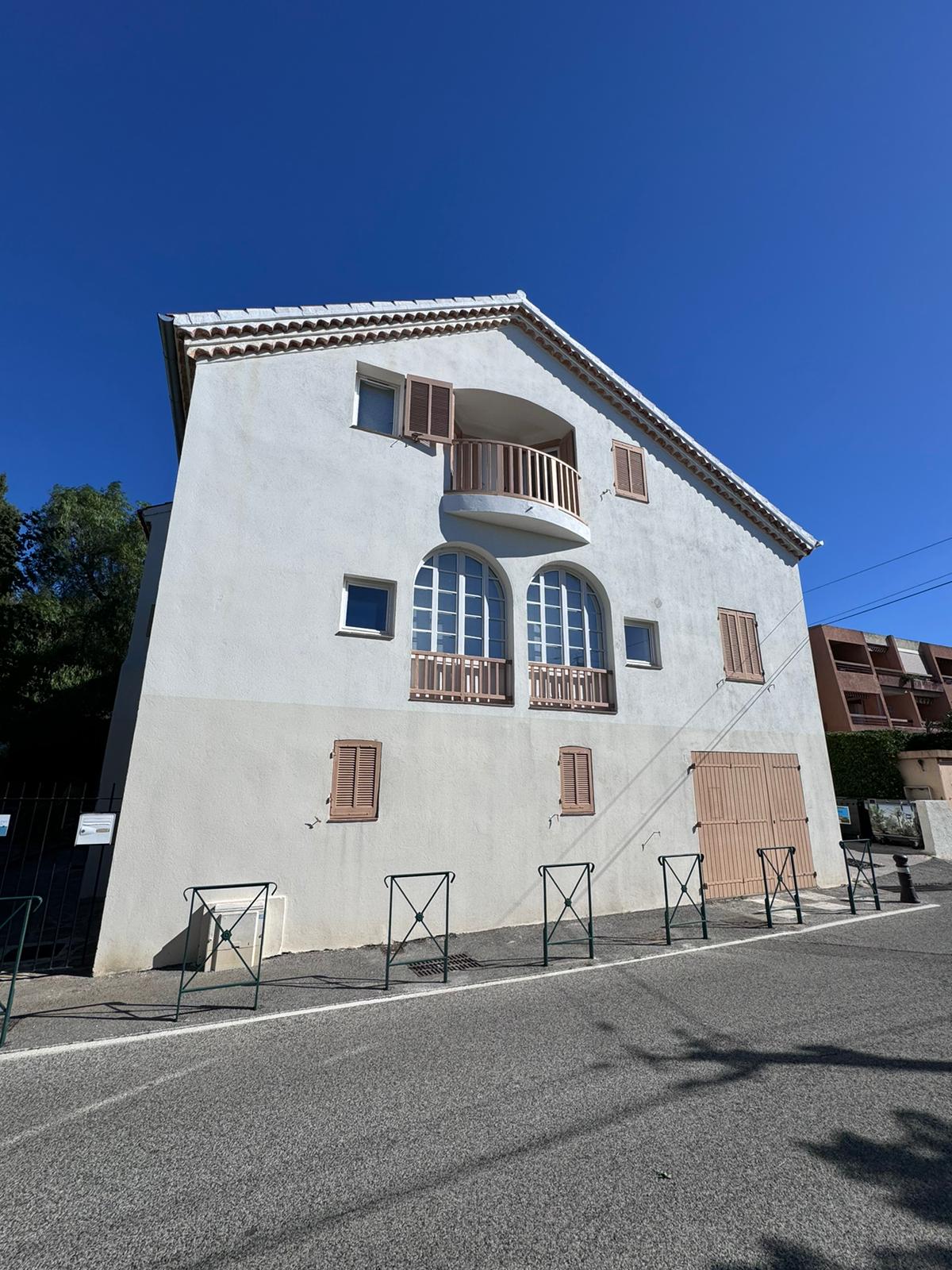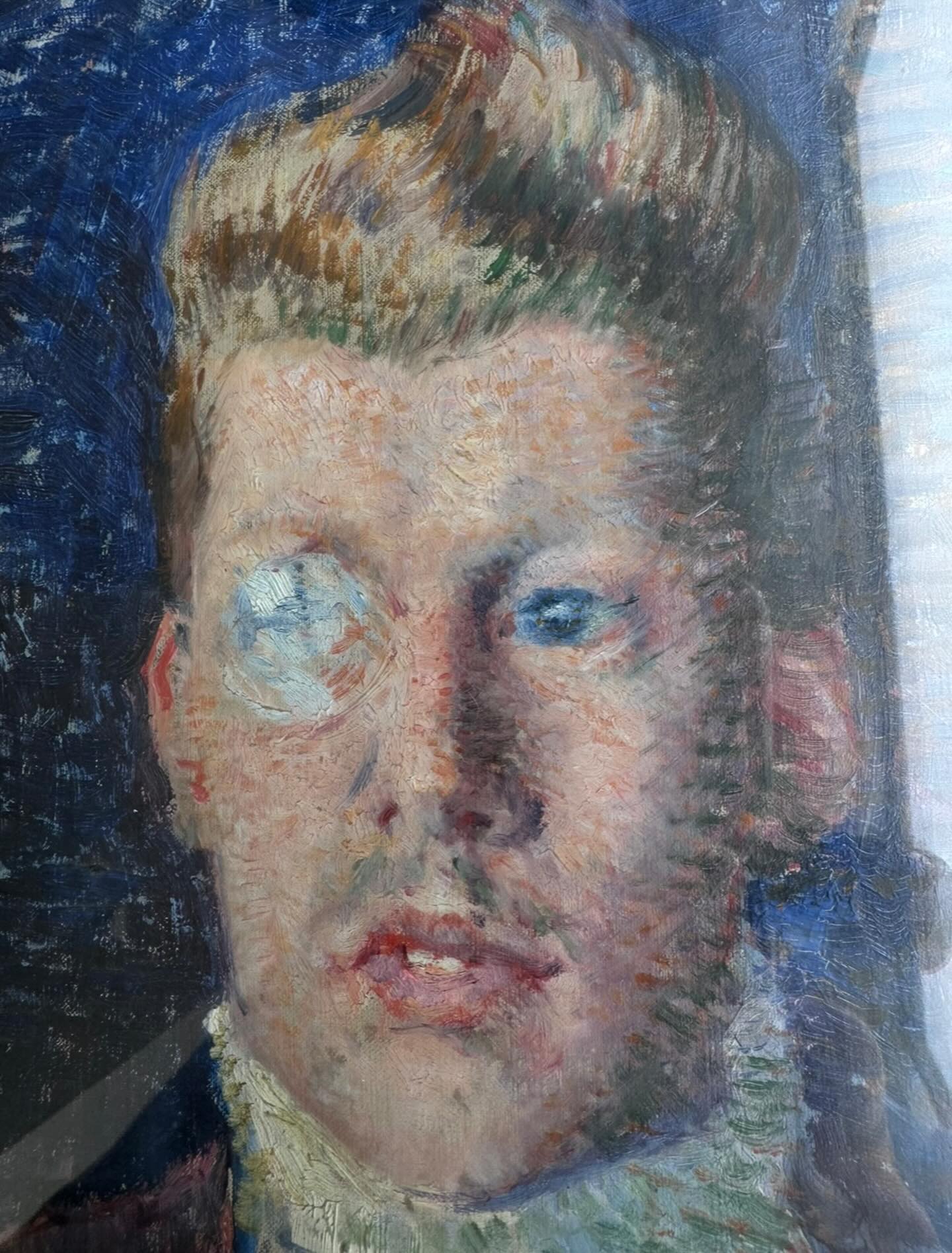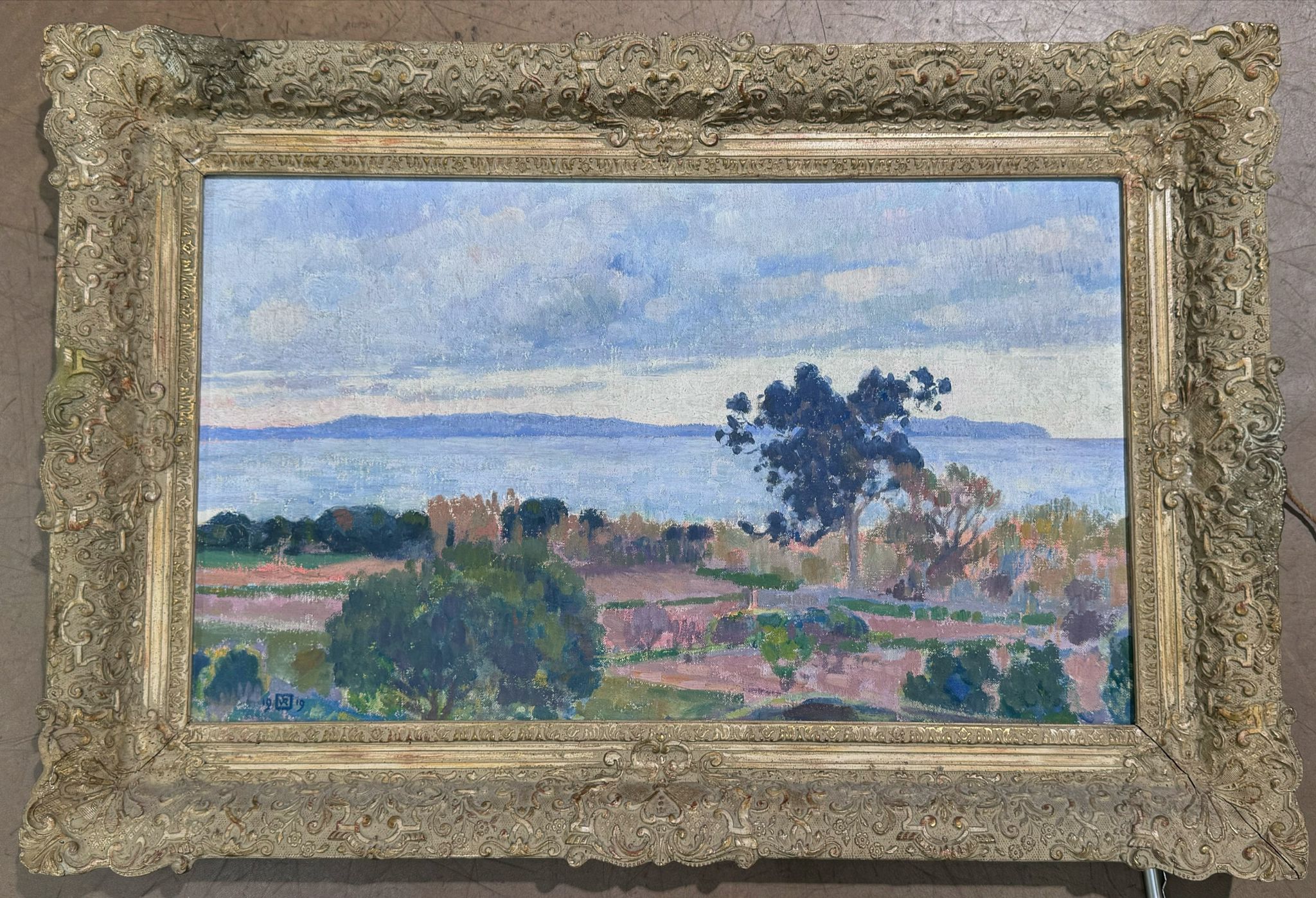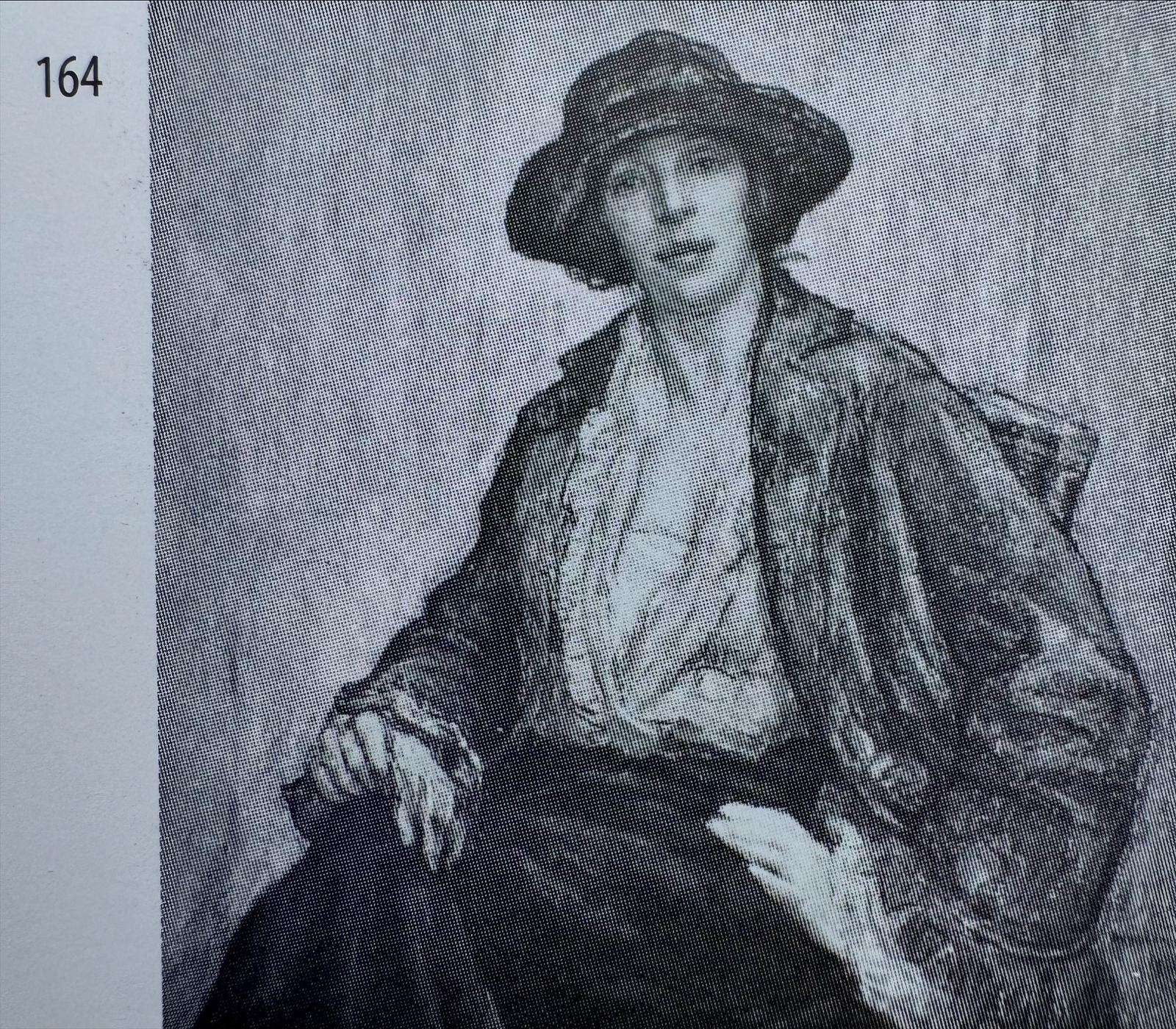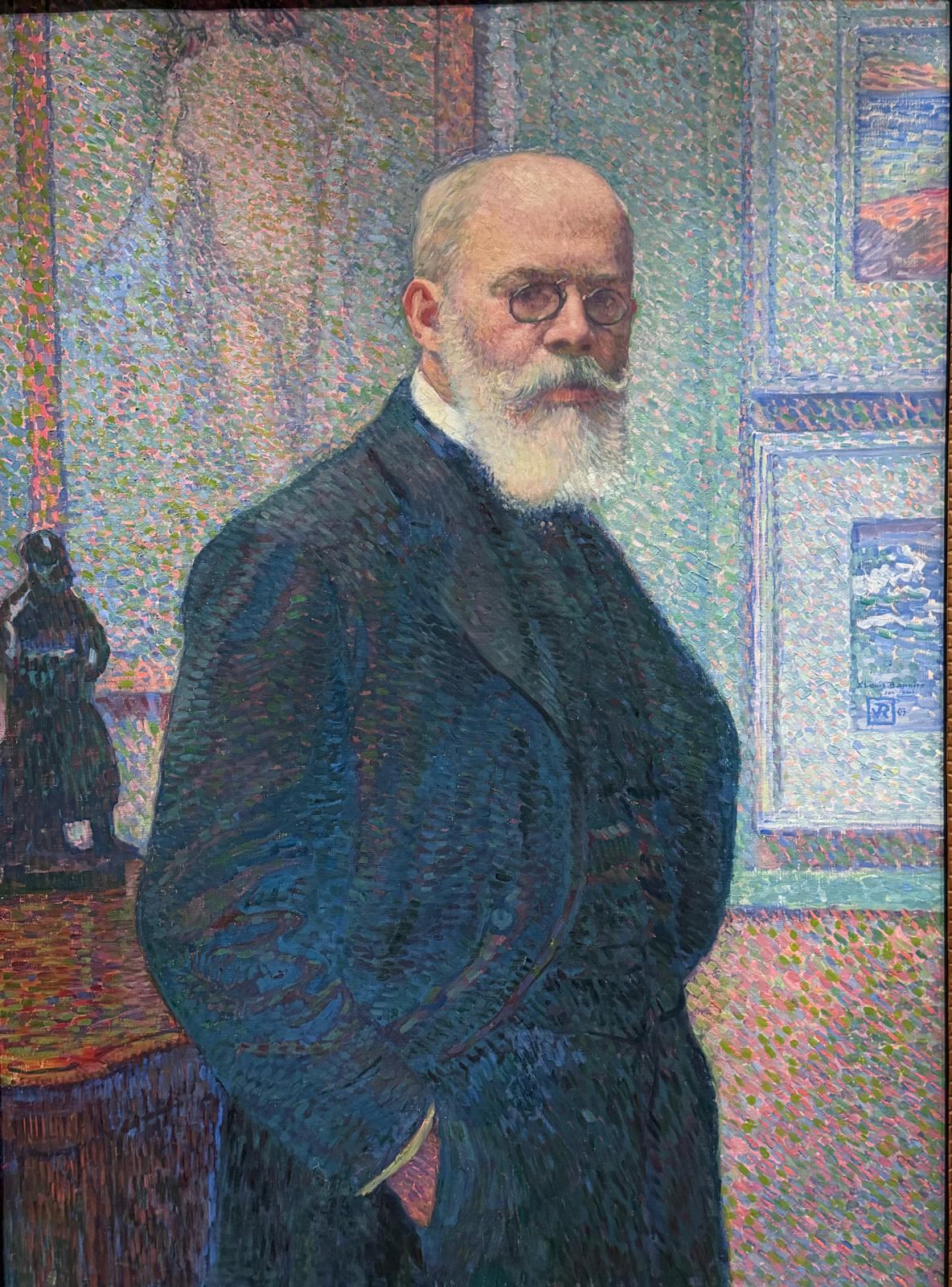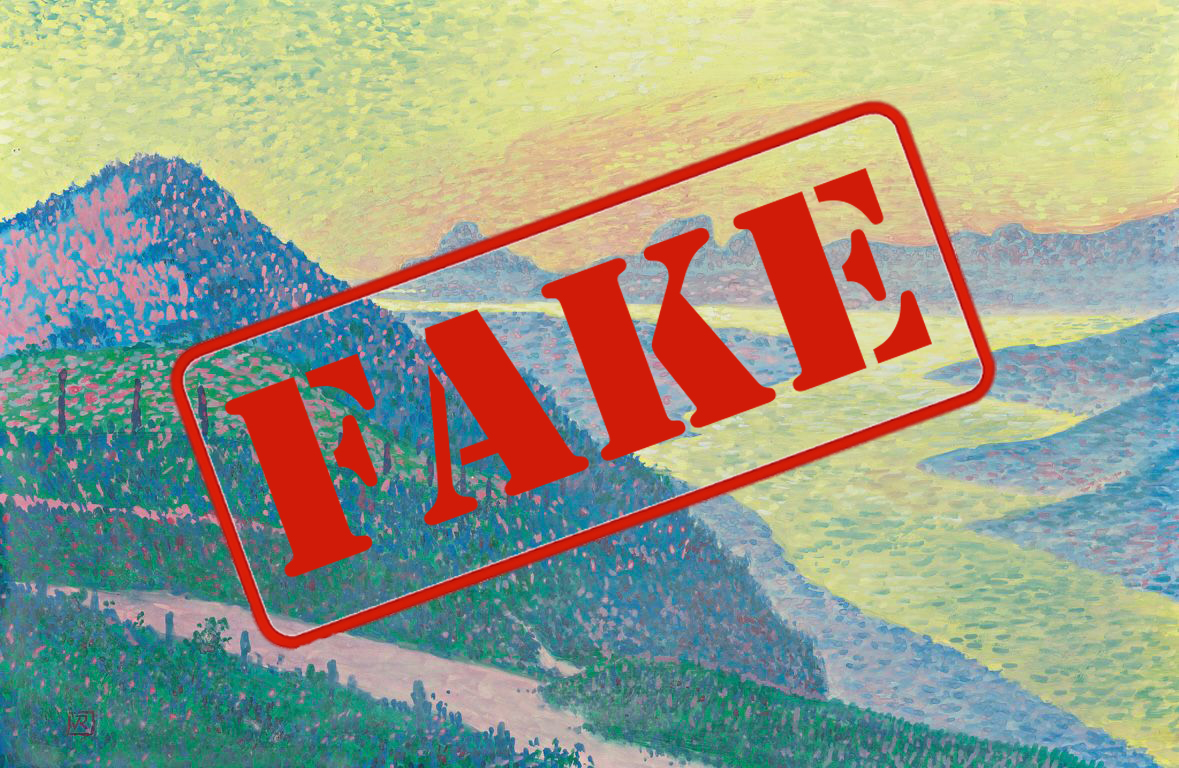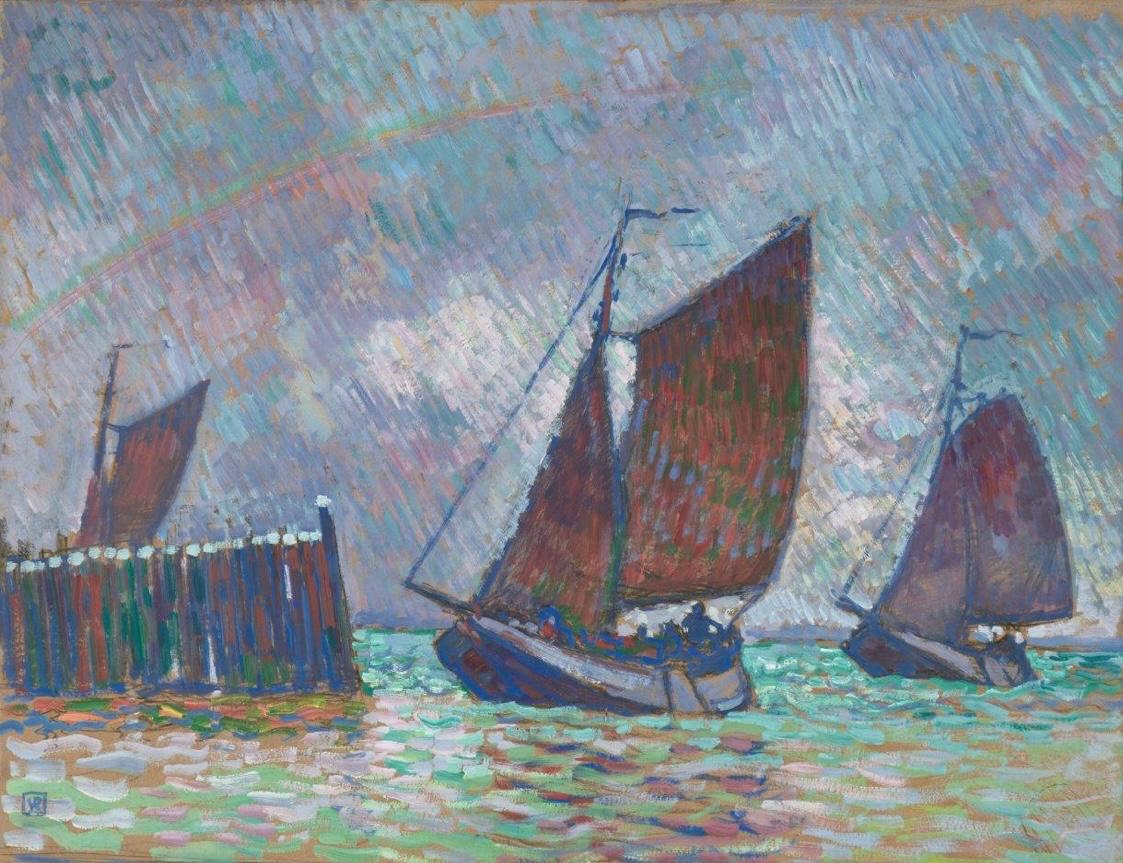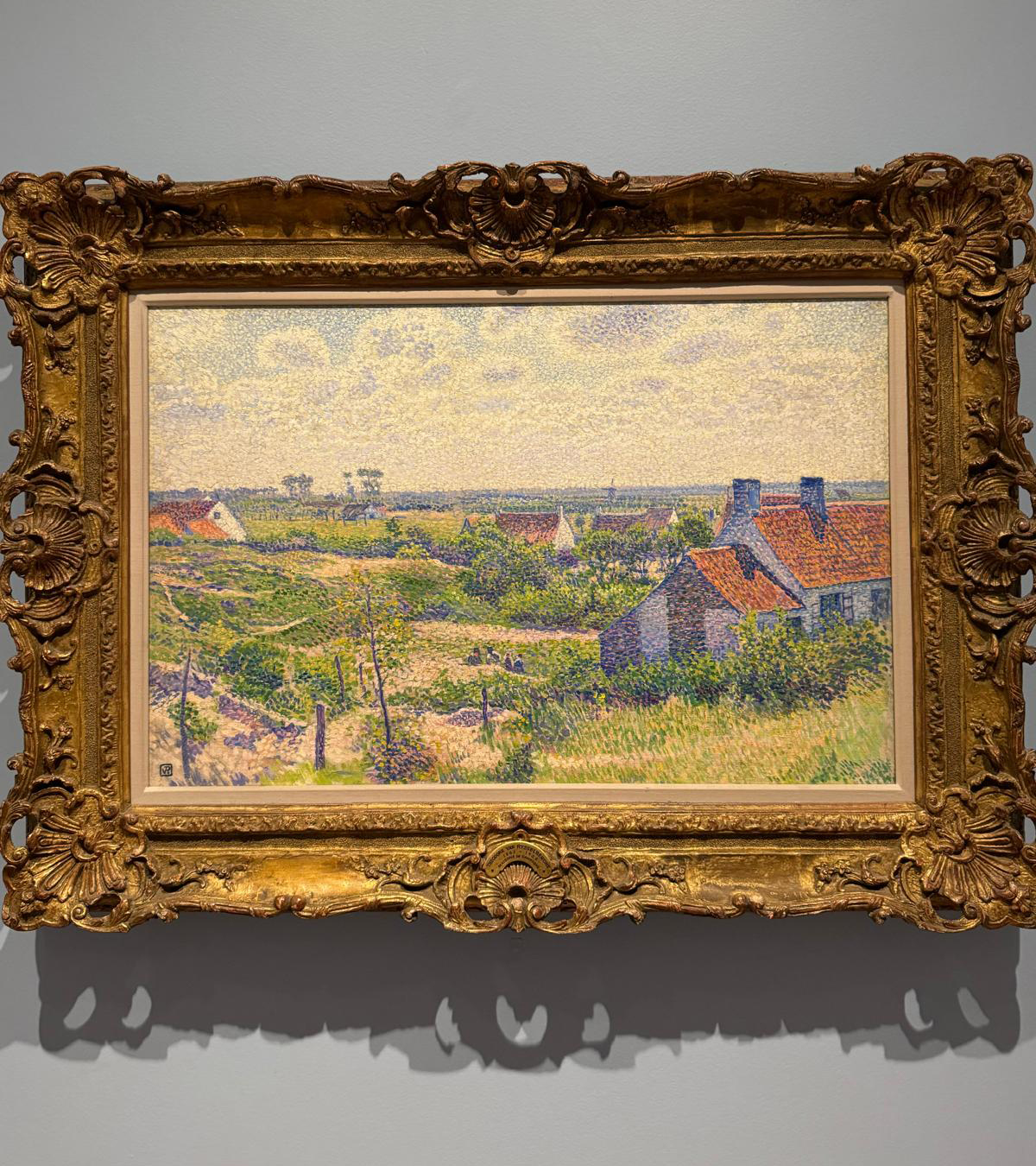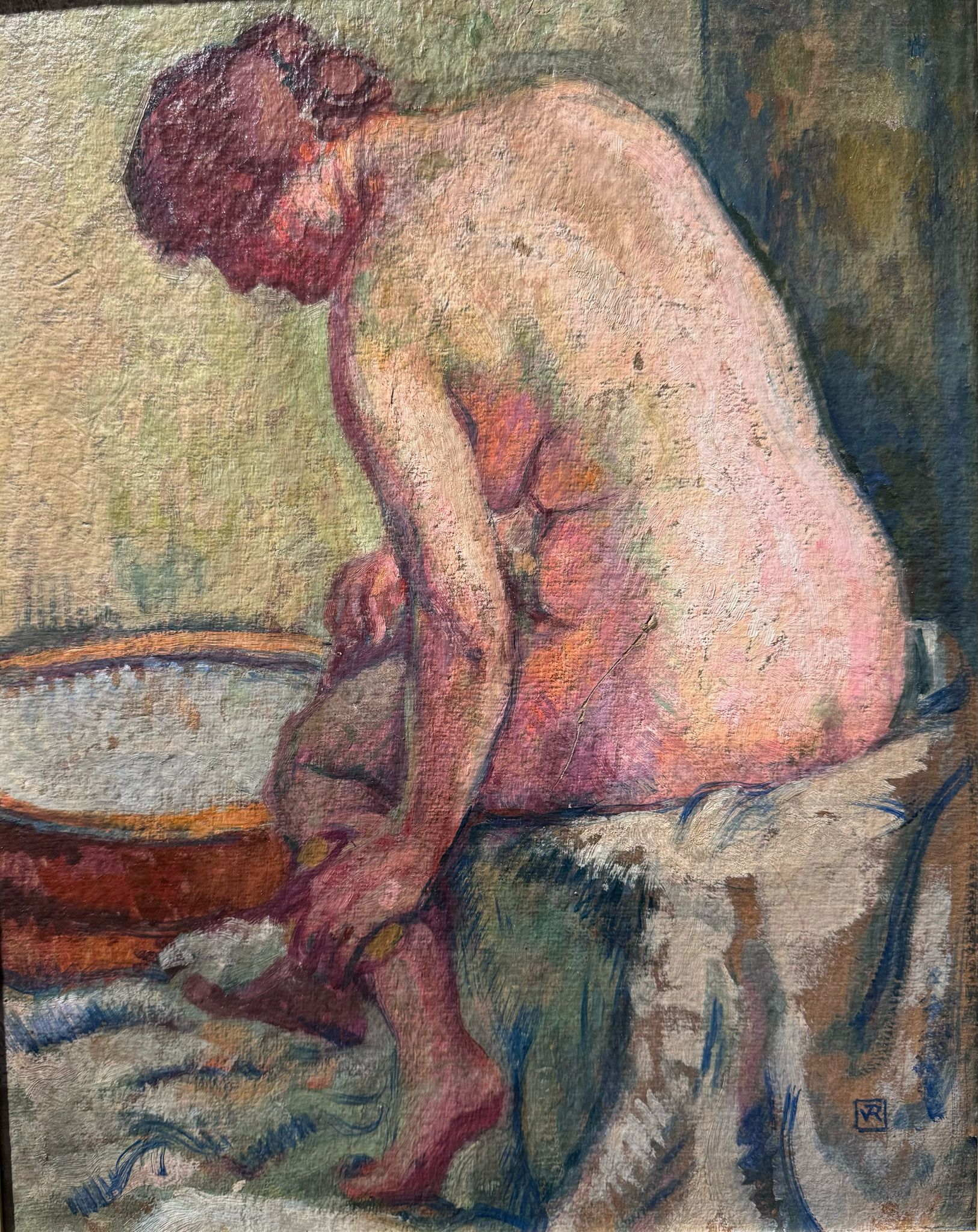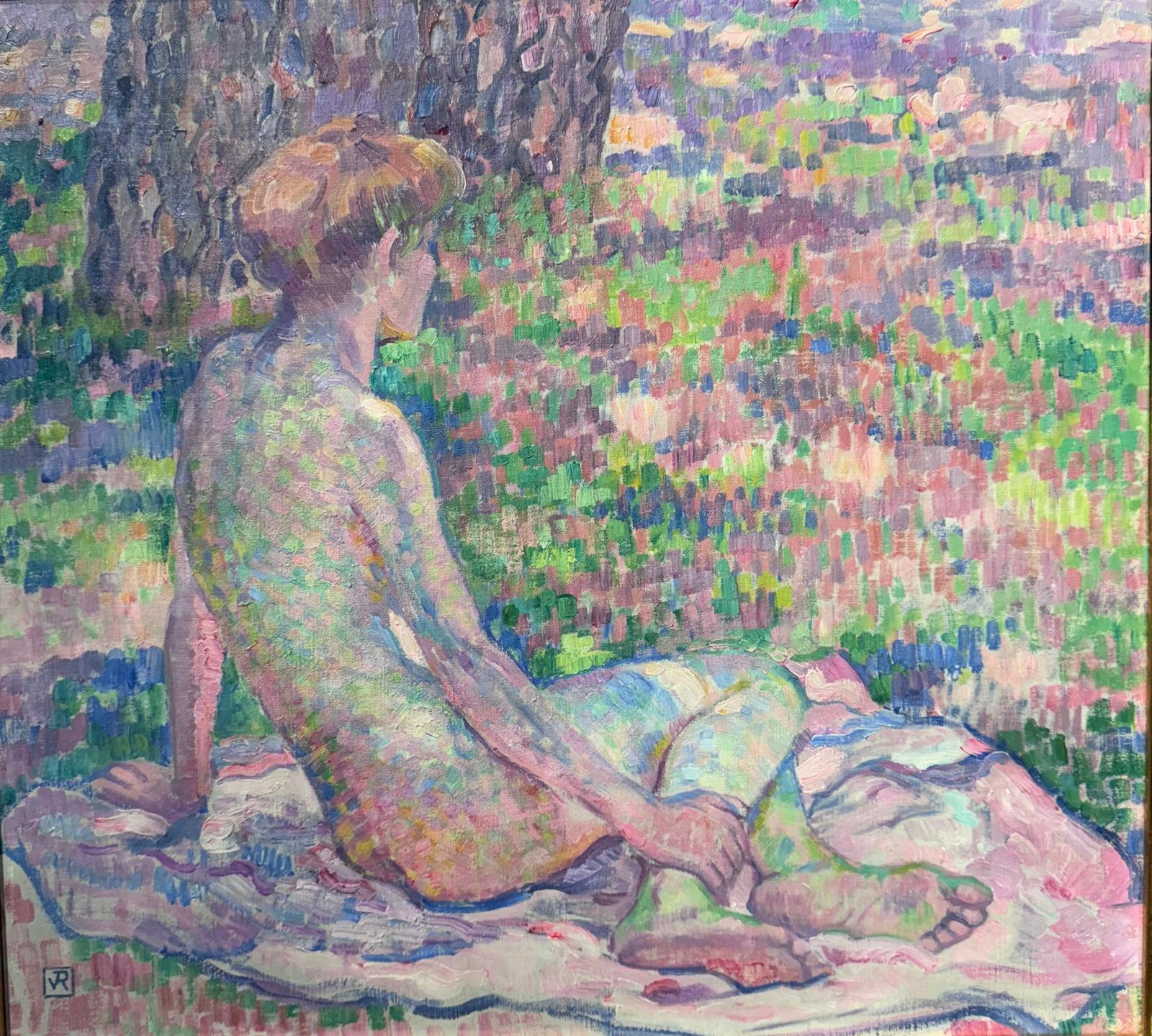Saint-Clair. Commune of Le Lavandou (Var). Théo Van Rysselberghe’s house and studio, designed by his brother Octave, an architect. The painter explored the region from the early years of the century and produced countless beautiful compositions featuring bathers, one of his favourite subjects. He also painted numerous still lifes,...
A Word from the Expert
Unpublished portrait of Pierre Olin
Absent, like many other works by the artist, from the unreasonable and irrational catalogue published in 2003, which can be considered one of the worst publications of its kind, given the omnipresence of omissions, fantasies, approximations and errors. It seems that the art market only acknowledges its existence, as...
L’île du Levant (ciel gris)
Painted in 1919 by Théo Van Rysselberghe. A very pretty small canvas measuring 33 x 55 cm, signed with the monogram and dated in the lower left corner. On its original canvas and very well preserved, the work would benefit from a light cleaning. There are several versions of...
George Morren. Portrait of a Lady, 1922
When blatant incompetence is compounded by negligence, expertise becomes grotesque. What else can be said when this authentic painting by George Morren (authenticated as such by Tony Calabrese, the artist’s distinguished expert) is found in a self-proclaimed ‘Catalogue raisonné of Théo Van Rysselberghe’ under the number 1922-012. The painting...
Louis Bonnier, architect
The architect Louis Bonnier was painted by van Rysselberghe in 1903, two years after he commissioned the design of his new studio on Avenue Laugier in Paris. Bonnier had previously drawn up the plans for Georges Flé’s villa in Ambleteuse, where Maria and Théo Van Rysselberghe regularly stayed. Bonnier...
Expertise…
Confronted with a work to be analyzed, an artist’s expert calls on more than his or her first, instinctive impression (which in reality is the instantaneous sum of years of research and examination), his or her memory, emotion and the most advanced possible knowledge of the artist, his or...
Fishing boats in Zeeland
Painted in Veere in 1906 by Théo Van Rysselberghe, this fine painting is unsurprisingly missing from the Feltkamp catalogue raisonné, but will be accompanied by a certificate from Olivier Bertrand, the artist’s expert who is preparing a scientific catalogue raisonné based on unpublished archives.The painting was exhibited in 1908...
Knokke 1894
This beautiful painting by Théo Van Rysselberghe was painted in Knokke in 1894 during a summer spent with his friend, the French Impressionist painter Camille Pissarro. It depicts the typical little houses that can still be found today in the immediate Knokke countryside. Van Rysselberghe painted many fine Neo-Impressionist...
Femme s’essuyant – Sale in Paris on April 11th 2025
An uninteresting painting by a very uninspired Théo Van Rysselberghe, who paints this laborious ‘Woman wiping herself’. To cap it all, the painting is unfortunately damaged by a large scratch. Estimated at 8,000/12,000 euros, but is it worth it? Etude Ferri sale, Paris 11 April 2025.
Auction : Small nude (seated under the pines) 1904/1905
Auction : Small nude (seated under the pines) 1904/1905 Estimated at 60/80,000 euros(Purchasing costs 31.2% which is not nothing…) Certificate Olivier BertrandWill be included in the catalogue raisonné being prepared by Olivier Bertrand
